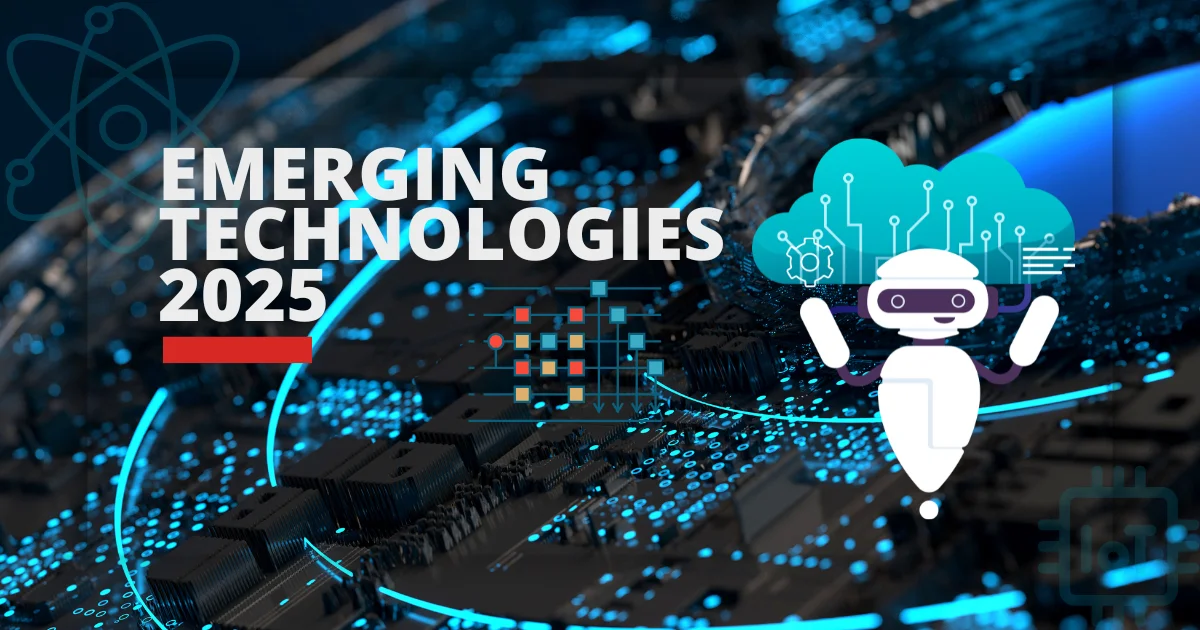
Introduction: The Unseen Revolution of 2025
The world is rapidly evolving, driven by the surge of new and transformative technologies. As we approach 2025, several groundbreaking innovations are set to redefine industries, economies, and daily lives across the globe. From artificial intelligence (AI) to quantum computing, emerging technologies promise to revolutionize everything from healthcare to transportation. But while these developments are exciting, they also present complex challenges. What will these technologies mean for the global workforce? How will they change the nature of human connection and the world we inhabit?
In this commentary, we take a closer look at the top emerging technologies of 2025, examining their potential impact on various industries and their broader implications for society. What are the promises and pitfalls of these innovations, and how should we prepare for the future they’re shaping?
Historical Context: A Journey of Technological Advancement
To understand the significance of the emerging technologies of 2025, we must first consider how far we’ve come. The history of technological innovation has been a story of exponential growth. In the early 20th century, we witnessed the birth of electricity, followed by the development of the telephone, radio, and television. Each of these innovations transformed communication and social interaction. By the late 20th century, personal computers and the internet ignited a new digital age.
The 21st century has already brought us smart devices, automation, and breakthroughs in artificial intelligence, yet it feels like we’re on the cusp of even more profound changes. These advancements will build on the technological strides made in recent decades. However, 2025 marks a crucial juncture: this year is poised to be the tipping point when several emerging technologies reach maturity and move from experimental phases to mainstream adoption.
Analysis of Current Implications: What Does This Mean for Us?
At present, we’re seeing early implementations of technologies that promise to disrupt multiple industries. Here are a few key areas where these emerging technologies are already making an impact:
Artificial Intelligence (AI) and Machine Learning
AI and machine learning are no longer the future—they are the present. In 2025, AI will be deeply embedded in nearly every industry, driving everything from business analytics to healthcare. In particular, AI-powered algorithms are improving decision-making in finance, enhancing automation in manufacturing, and even revolutionizing personalized medicine by predicting health conditions before symptoms arise. For instance, AI-driven diagnostic tools are already being used to detect diseases such as cancer with unprecedented accuracy.
However, AI also raises concerns about job displacement. As automation increases, many fear that low-skill jobs, particularly in sectors like manufacturing and transportation, will be rendered obsolete. Governments and industries must work together to provide retraining opportunities and ensure a transition toward a future where humans and AI can coexist productively.
Quantum Computing
Quantum computing, once the domain of theoretical physics, is quickly becoming a practical reality. By 2025, we’re likely to see the first commercially viable quantum computers. These machines, powered by quantum bits (qubits), can process complex calculations at speeds unimaginable by today’s standards. Quantum computing holds immense potential for fields such as cryptography, materials science, and climate modeling.
In finance, for example, quantum algorithms could be used to optimize portfolios and risk management strategies in ways that classical computers cannot achieve. Similarly, in medicine, quantum computing could help simulate molecular structures and speed up drug discovery.
Yet, there are major challenges ahead. Quantum computers will require stable environments and ultra-low temperatures, which makes their widespread deployment still uncertain. Moreover, the power of quantum computing threatens to undermine current encryption technologies, creating new cybersecurity concerns that must be addressed before full adoption.
Biotechnology and Gene Editing
Advances in biotechnology are set to revolutionize the healthcare sector by 2025, with gene editing technologies like CRISPR making significant strides. These tools offer the potential to edit the human genome with precision, opening the door to curing genetic disorders and preventing diseases before they occur.
The implications for healthcare are profound. Diseases that were once thought incurable, such as certain types of cancer, cystic fibrosis, and Huntington’s disease, could potentially be eradicated. However, the ethical questions surrounding gene editing are significant. Should we alter the human genome to eliminate diseases? And if so, where should we draw the line in terms of altering genetic traits?
Despite the ethical debates, gene editing has the potential to transform not just healthcare, but agriculture as well. Genetically modified crops could be engineered to withstand harsh climates, improving food security in regions facing environmental challenges.
Global and Local Perspectives: How Are Different Regions Adapting?
Emerging technologies are not just transforming industries—they are also changing the way different countries interact with these innovations. While some regions, like North America and Western Europe, are already embracing technologies such as AI and quantum computing, other regions are facing challenges in adoption due to infrastructure limitations and differing regulatory environments.
Africa’s Growing Technological Landscape
In Africa, the rise of mobile technology has already been transformative. In 2025, mobile internet access will continue to expand, opening the door to greater inclusion and economic opportunities. AI is also finding its place in Africa, with applications in agriculture, healthcare, and education. For example, AI-powered systems are helping farmers optimize crop yields, while mobile health apps are providing remote diagnostics to underserved populations.
However, challenges persist. In many African countries, access to reliable electricity, internet connectivity, and digital skills remains limited. For emerging technologies to have a significant impact, governments must invest in infrastructure and education. International partnerships between developed and developing nations will also play a critical role in fostering technological growth in Africa.
The United States and China: Leading the Technological Race
In both the U.S. and China, the race for technological supremacy is well underway. The U.S. has long been a leader in AI, with Silicon Valley housing the world’s largest tech companies. However, China has made significant strides, particularly in 5G and quantum computing, and is rapidly advancing its own AI capabilities. By 2025, the U.S. and China will continue to be the dominant players in shaping the future of technology, but the geopolitical tensions between these two superpowers could lead to a divided technological landscape.
The competition between these nations will drive innovation, but it may also lead to fragmentation in standards and regulations. As new technologies emerge, the world must consider how these countries will cooperate—or clash—on issues such as data privacy, cybersecurity, and AI ethics.
Challenges and Opportunities: What Lies Ahead?
The potential for emerging technologies is vast, but so are the challenges. The rapid pace of innovation raises several concerns, including ethical dilemmas, the future of work, and privacy issues. In particular, the development of AI and quantum computing must be paired with robust ethical frameworks that prevent misuse, discrimination, and privacy violations.
At the same time, the opportunities are just as vast. Emerging technologies can drive economic growth, improve quality of life, and solve some of humanity’s most pressing problems, from climate change to healthcare inequities. Governments, industries, and individuals must collaborate to ensure that the benefits of these technologies are distributed fairly and responsibly.
Future Outlook: A Transformative, but Cautious, Future
As we look ahead to 2025 and beyond, it’s clear that the technologies we’re developing today will fundamentally alter the course of human history. From AI to biotechnology, these innovations promise a future that was once the realm of science fiction. However, as we embrace these advancements, we must also remain vigilant about their potential risks.
The future of emerging technologies is not just about creating the next big thing. It’s about creating a future where technology serves humanity, not the other way around. With careful regulation, ethical considerations, and global cooperation, we can unlock the full potential of these innovations while mitigating their risks.
Conclusion: Are We Ready for the Future?
The question isn’t whether emerging technologies will change the world—they already are. The real question is: Are we ready to embrace these changes responsibly? The next few years will be critical in shaping the technological landscape of 2025 and beyond. As industries, governments, and individuals, we must act with foresight, ensuring that these innovations benefit all of humanity.
The future is here—are we prepared to shape it for the better?






